This boat did not do well during Hurricane Ida. I took this picture on Highway 315 somewhere south of Houma, which was piled high with trash and ruined furniture that still hadn't been picked up. I suppose somebody will come along eventually for it.
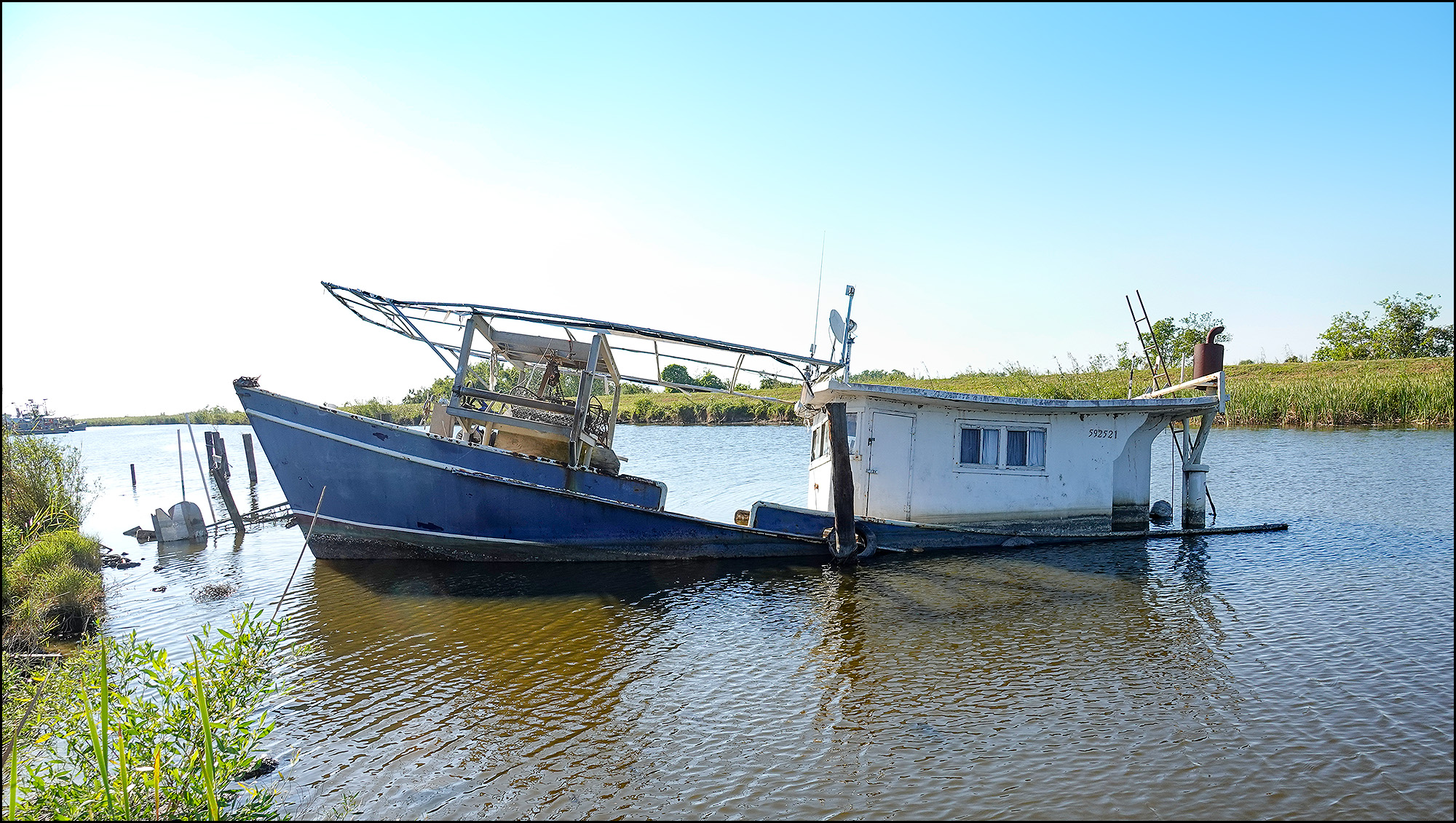
Cats, charts, and politics

I'm at the infusion center to begin a new chemo regimen. This is my fourth, and I'll be getting it until the CAR-T folks open up a slot for me.
I got here at 9:30 am after taking some Pepcid with breakfast along with 40 mg of dex. This compares to the 2 mg I'm currently taking. By midnight I should be wide, wide awake.
When I arrived they told me I first had to take some Tylenol and then wait an hour. But this is not my first rodeo and I had already taken some Tylenol. So let's get this show on the road!
Sure, but first they had to take my temperature. I measured 85.6 degrees. "That seems too low," said the nurse. "That sounds like I should be dead," I answered. So he got another thermometer, but it also registered 85.6. A third thermometer registered 95.6. Better but still bafflingly low. Finally, a fourth thermometer registered 96.7, which was deemed good enough.
Then we went through my usual blood pressure routine. First reading: too high! Second reading: too high! Third reading, standing up: looks great!
So now we're ready? Nope. Apparently my bilirubin level is high, which it always is. So we need my doctor's go-ahead, but no one can reach him. Finally someone does and he gives the green light.
 But now it turns out the pharmacy hasn't prepared the chemo IV. More waiting. Finally it arrives, but there are two bags of stuff. Nobody told me about a second med, but at this point I just shrugged. Hook me up.¹
But now it turns out the pharmacy hasn't prepared the chemo IV. More waiting. Finally it arrives, but there are two bags of stuff. Nobody told me about a second med, but at this point I just shrugged. Hook me up.¹
Elapsed time: at 11:06 am the IV drip finally starts. No wonder they told me to plan on the whole thing taking five hours. I guess that's 1½ hours of dicking around and 3½ hours of actual chemo.
Luckily I'm in no hurry and I'm feeling very mellow this morning. So everything is OK. Maybe I'll just take a nap for a little while.
¹For those who care, it turned out to be Carfilzomib (Kyprolis). The primary med this time around is Elotuzumab (Empliciti).
A week ago, Elon Musk announced that he owned 9.2% of Twitter and would be joining the board of directors. Twitter stock rose. By Thursday, everyone was already tired of his bullshit and Twitter stock began to drop. Over the weekend Musk withdrew from the board and on Monday Twitter stock opened higher.
Lesson: Elon seems like a good idea until you're forcefully reminded that, really, he isn't. He's fine at running his own companies but he's basically just a shitposting troll everywhere else.
According to the Bureau of Labor Statistics, here are the items that have gone up in price the most over the past year:
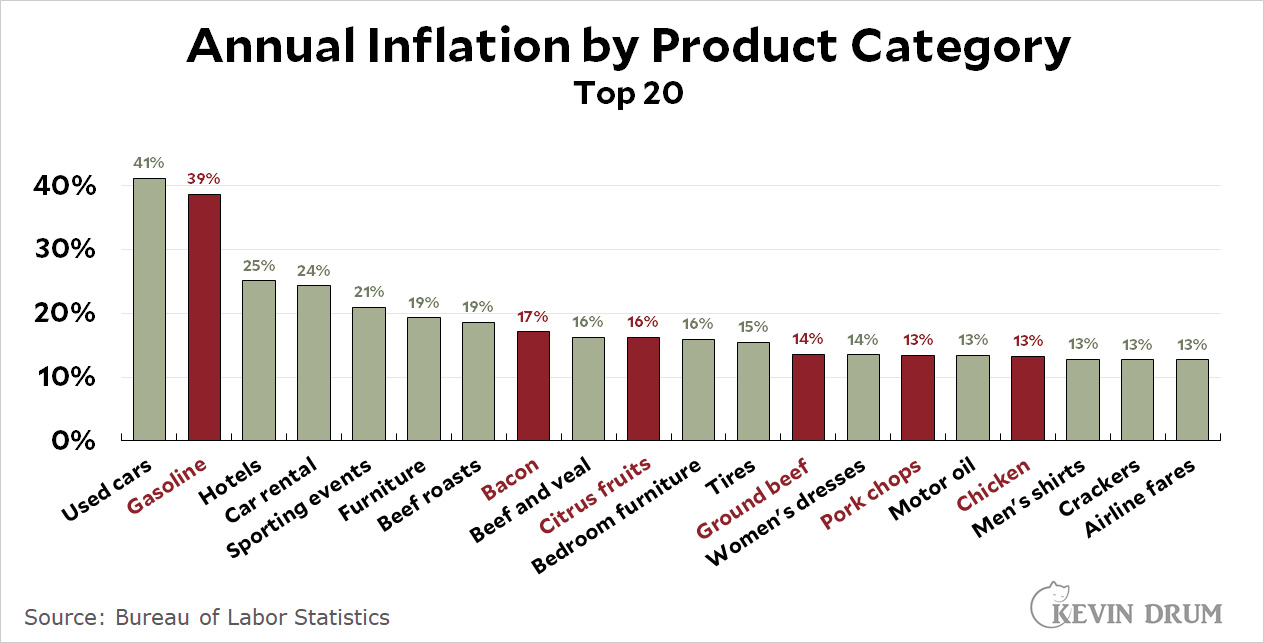 This is why voters are so upset over an inflation rate of 7%. That may be the overall inflation rate, but for some of the things that are most visible to them (gasoline, oranges, ground beef, chicken, etc.) prices have gone up by 15% or more—including a few like gasoline and used cars that have gone up by 40%.¹ Is it any wonder that inflation seems a lot higher than it really is, especially when their paychecks have barely budged?
This is why voters are so upset over an inflation rate of 7%. That may be the overall inflation rate, but for some of the things that are most visible to them (gasoline, oranges, ground beef, chicken, etc.) prices have gone up by 15% or more—including a few like gasoline and used cars that have gone up by 40%.¹ Is it any wonder that inflation seems a lot higher than it really is, especially when their paychecks have barely budged?
¹Rent isn't on this list yet, but there's a good chance it will be before long.
What's the best measure of the spread of COVID-19? That's a hard question to answer these days, but I think that hospitalizations have emerged as everyone's go-to metric. So here it is:
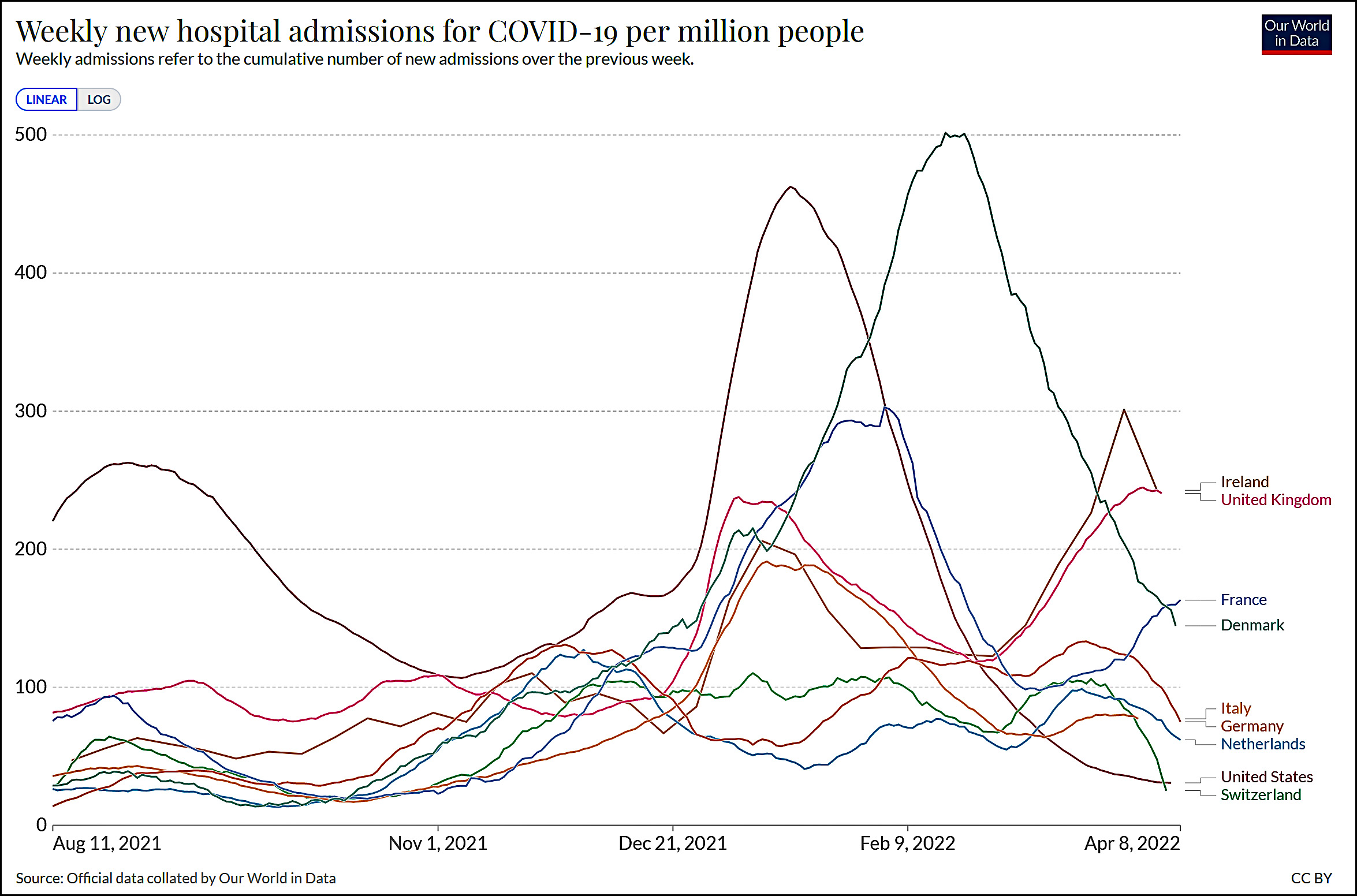 The good news is that just about everyone has peaked and is starting to come down. The only exception is France, which is hard to read right now.
The good news is that just about everyone has peaked and is starting to come down. The only exception is France, which is hard to read right now.
Yesterday I casually mentioned that I didn't think the overproduction of PhDs was a big problem. This produced some pushback, including the familiar complaint that it dooms lots of PhD-havers to a life of penury as members of the huge pool of adjunct professors desperately hoping they'll eventually land a full-time tenure-track job.
It's true that this happens, but it's due less to the overproduction of PhDs than it is to the steady decline of tenure-track positions in American universities. In fact, PhDs more generally are very well paid:
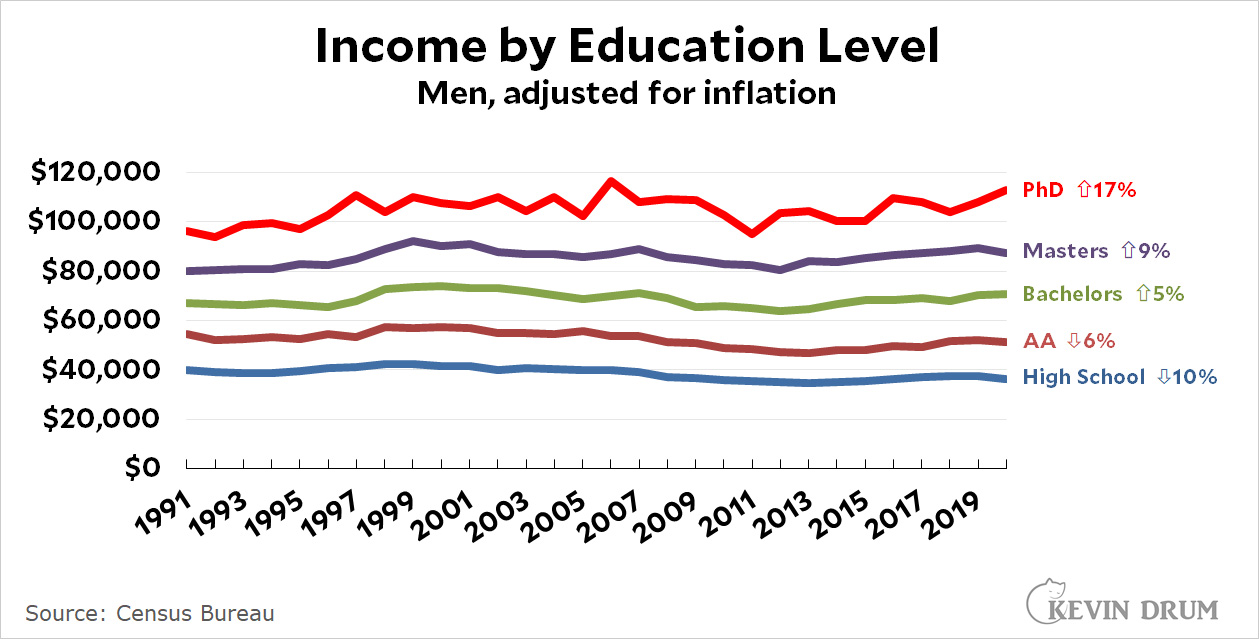
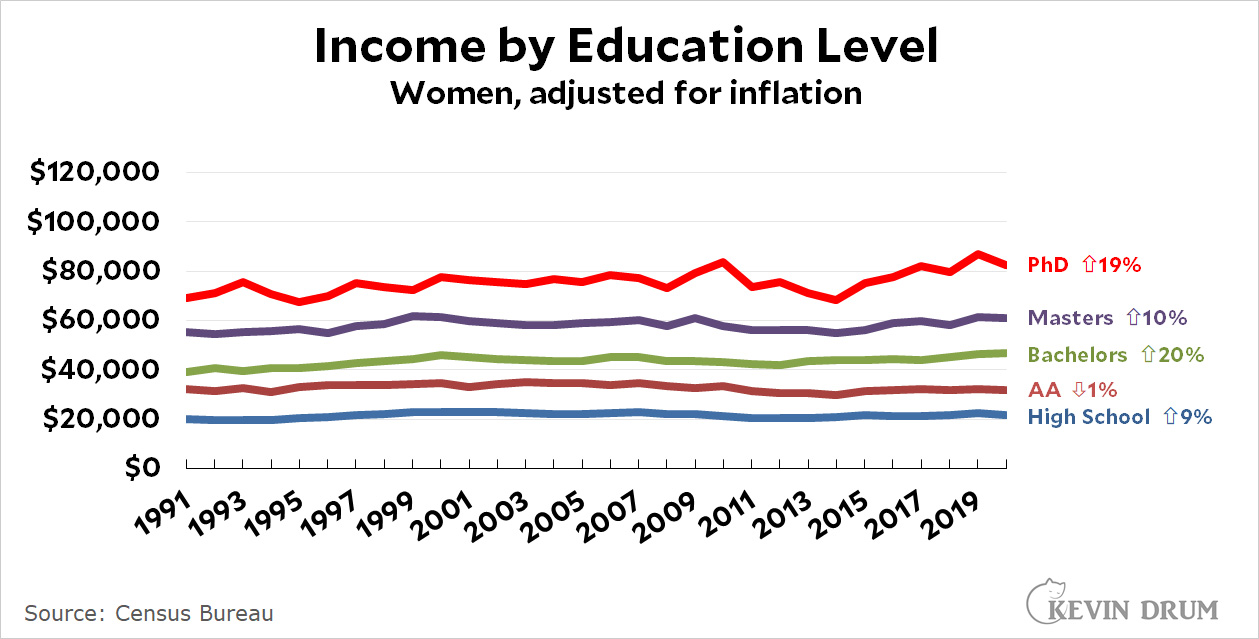 Not only is the median salary of PhDs quite high, but over the past few decades it's been increasing more than any other educational level. This trend is too persistent and too large to be the result of demand just for IT or just for STEM. Those might be the highest paid folks, but other PhDs must be seeing rising pay as well. This is strong evidence that, on average, there's no glut of PhDs.
Not only is the median salary of PhDs quite high, but over the past few decades it's been increasing more than any other educational level. This trend is too persistent and too large to be the result of demand just for IT or just for STEM. Those might be the highest paid folks, but other PhDs must be seeing rising pay as well. This is strong evidence that, on average, there's no glut of PhDs.
It's still possible, of course, that there's a glut in very specific areas. Maybe we mint too many PhDs in medieval European philosophy. It's also true that PhDs who are really committed to university teaching jobs are oversupplied. The lousy pay of adjuncts is evidence of this in the same way that high pay more generally is evidence of scarcity in the outside world.
So: are there too few full-time teaching positions in American universities? I would say yes. Permanent faculty is the lifeblood of a university, and it's appalling that this has been steadily hacked away in the name of budget cutting.
Is there a glut of PhDs who want university teaching positions so badly that they drive down pay for adjuncts? Again, probably yes.
But is there a general glut of PhDs? The evidence suggests there isn't.
Walmart is getting a lot of media play for announcing an increase in pay for its long-haul truck drivers:
The company, in a bid to keep its supply chain running smoothly, is setting starting salaries for its truck drivers between $95,000 and $110,000 a year, up from an average starting salary of $87,000, said a Walmart spokeswoman. The internal training program will offer workers in other Walmart roles a 12-week course to become certified truck drivers and join the company’s internal fleet, the company said.
This is suspicious wording. Why is the new pay given as a range while the old pay is given as an average? If, in practice, the increase is really from $87,000 to $95,000, that's a raise of 9%—which comes out to about 2% after inflation. In other words, nothing much at all.
On the other hand, if the new average is more like $100,000, then the increase is about 8% after inflation. That's a significant amount, which suggests there really is a shortage of truck drivers that has to be addressed with higher pay.
This is hardly the most important thing in the world, but you should always be a little suspicious when statistics are given in varying ways. In this case, I'd sure like to know either the old range or the new average.
My distance vision now seems to be 20/20 or pretty close to it. My near vision is significantly improved: I'm writing this without glasses, which means my medium vision is usable in a pinch, though still a bit fuzzy. My reading vision is still unusable without glasses, but at least it's not just a big blur, as it was before.
Next week we'll stretch the focal length of my lenses and work on improving my reading vision. Progress!
Methane is a very powerful greenhouse gas, much more powerful than CO2. And emissions of methane keep going up:
 The bad news is that the amount of methane in the atmosphere isn't just rising, it's accelerating. The good news is that methane only lasts about 50 years before it breaks down. If we can get a handle on emissions, levels should flatten out as old methane starts to disappear and then should start decreasing. This is unlike CO2, which will stay around forever even if we stop emitting it.¹
The bad news is that the amount of methane in the atmosphere isn't just rising, it's accelerating. The good news is that methane only lasts about 50 years before it breaks down. If we can get a handle on emissions, levels should flatten out as old methane starts to disappear and then should start decreasing. This is unlike CO2, which will stay around forever even if we stop emitting it.¹
¹Which is why some kind of carbon capture technology is important. It's almost a dead certainty that any truly effective response to climate change will eventually require us to reduce not just emissions of new CO2, but actual levels of existing CO2 in the atmosphere.